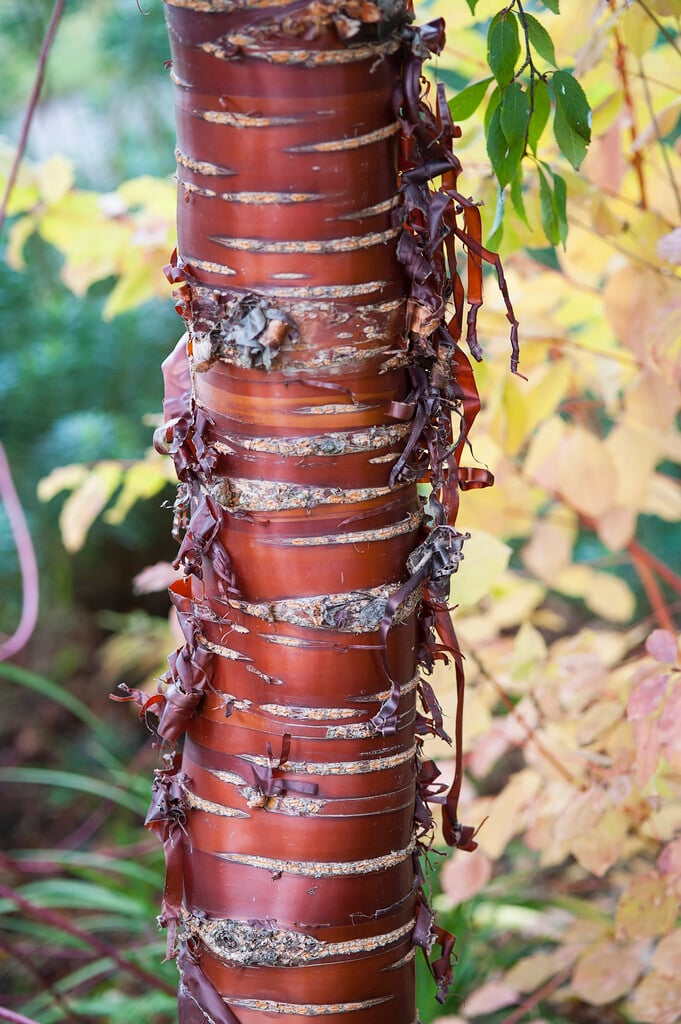Prunus serrulata (d)
Japanese cherry
A spreading, deciduous tree to 12m with smooth, chestnut-brown bark. Dark green, lance-shaped leaves up to 12cm long are bronze-tinted in spring and turn yellow or red in autumn. Produces semi-double, white or pink, cup-shaped flowers 3cm across in profusion in mid- to late spring, followed by small, very dark red to black, inedible fruit
Size
Ultimate height
8–12 metresTime to ultimate height
10–20 yearsUltimate spread
Wider than 8 metresGrowing conditions
Moisture
Moist but well–drainedpH
Acid, Alkaline, NeutralColour & scent
| Stem | Flower | Foliage | Fruit | |
| Spring | White | Bronze | ||
|---|---|---|---|---|
| Summer | Green | Black Red | ||
| Autumn | Red Yellow | |||
| Winter |
Position
- Full sun
Aspect
South–facing or West–facing
Exposure
Sheltered Hardiness
H6Botanical details
- Family
- Rosaceae
- Native to GB / Ireland
- No
- Foliage
- Deciduous
- Habit
- Spreading branched
- Genus
Prunus can be deciduous or evergreen trees or shrubs with showy flowers in spring, and often good autumn foliage colour. Some have edible fruit in autumn, and a few species have ornamental bark
- Name status
Correct
How to grow
Cultivation
Grow in any moist but well-drained, moderately fertile soil in full sun
Propagation
Propagate by seed sown in containers outdoors in autumn; or by softwood cuttings, with bottom heat, in early summer
Suggested planting locations and garden types
- Cottage and informal garden
Pruning
Pruning group 1, ideally in summer to reduce the risk of silver leaf infection
Pests
May be susceptible to aphids and caterpillars
Diseases
May be susceptible to peach leaf curl, silver leaf, bacterial canker, blossom wilt and honey fungus. High Risk Host for Xylella fastidiosa
Love gardening
Sign up to receive regular gardening tips, inspiration, offers and more
View our Privacy Policy
Get involved
The Royal Horticultural Society is the UK’s leading gardening charity. We aim to enrich everyone’s life through plants, and make the UK a greener and more beautiful place.

